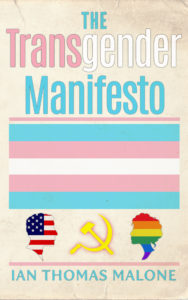Dune: Part Two is a worthy adaptation of unwieldy source material
Written by Ian Thomas Malone, Posted in Blog, Movie Reviews, Pop Culture
There’s a simple reason why one of the most popular science fiction books in the history of popular literature has struggled to find a worthy film adaptation. It’s not exactly accurate to say that Dune is unfilmable, but the book and its sequel are exceedingly heady philosophical exercises that don’t play well to adaptation. Denis Villeneuve’s first Dune took an admirable stab at the novel’s first half, often succumbing to the unwieldy weight of exposition and the sheer scope of the cast.
The back half of Dune is a bit more of an intimate affair. With Leto (Oscar Isaac) dead, the exiled Paul Atreides (Timothée Chalamet) and Lady Jessica (Rebecca Ferguson) find a new home among the Fremen, who dedicate their lives to disrupting the spice production now returned to House Harkonnen after they usurped House Atreides. One of the Fremen leaders Stilgar (Javier Bardem) is convinced that Paul is their messiah, quickly inserting Lady Jessica into the mechanics of their political world as the new Reverend Mother.
Dune is a very dense text. Villeneuve does an excellent job breaking the material down for casual audiences, even if much of the nuances of groups like the Bene Gesserit is lost in the pacing. The women of the film, particularly Lady Jessica and Chiani (Zendaya) provide most of the emotional backbone of the narrative, often exposing the flaws of the White Savior trope in the process. Herbert’s writing spent a lot of time focusing on prophecy that a film doesn’t really have time to explore. The book has the luxury of presenting Paul’s ascendency over hundreds of pages as a matter of fate. The abridged runtime makes for a far more awkward presentation of a young teenager as the messiah of this rich world.
Villeneuve shows off his confidence with a relaxed sense of pacing, leaning heavily on the exceptional cinematography to carry the narrative instead of Herbert’s densely packed plotting. Part Two cuts a lot of stuff out, often to the point of making you wonder why the first film spent so much time on unnecessary exposition. There is something beautiful about the way Villeneuve focuses on the beauty of Arrakis instead of trying to cover as much material as possible.
The film does buckle under its obligations to function more like a blockbuster film than an exercise in philosophy. The limits of its 165-minute runtime are quite exposed when the narrative leaves Arrakis for a bit to focus on the Emperor (Christopher Walken) and House Harkonnen. Feyd-Rautha is a flimsy, underdeveloped villain, a shame given Austin Butler’s obvious enthusiasm in the role. Stellan Skarsgård does an admirable job as Baron Vladimir Harkonnen, making the most of a limited runtime, but there’s an obligatory sense to the villainy that the film never quite shakes.
The action sequences are a bit of a mixed bag, much like the first film. The individual fight choreography is quite good, but the broader battles leave a lot to be desired. The cinematography of the actual fighting pales in comparison to the simpler frames showcasing the planet. The sandworms themselves aren’t given the same beautiful care and attention as they received in the first film.
Many popular science-fiction films have riffed off Dune’s basic premise over the years. Paul suffers from the weight of so many who came before him. Villeneuve never truly sells his lead as this necessary messiah figure, a reality exacerbated by the excessive amount of parental figures he has in the film, including Lady Jessica, Stilgar, and Gurney Halleck (Josh Brolin). All three work hard to sell Paul as a figure of destiny, but Chalamet is rarely given much space to run with the ball. Zendaya is a much more satisfying emotional care of the film, an awkward reality that the source material can’t really compensate for.
Villeneuve spends so much time capturing the feel of Arrakis that he sometimes forgets that the audience needs to feel something toward Paul, perhaps the weakest character among the principal cast. It’s not necessarily Villeneuve’s fault that audiences are bound to be familiar with the Luke Skywalker’s and the Neo’s of the world who owe so much to Herbert’s work, but the headiness of Paul’s character is quite lost in the shuffle. One has to wonder if some of the time spent on characters who only appeared in the first movie might have been better allocated to the newcomers in Part Two whose introductions feel quite rushed.
Dune probably needed three movies to get everything right. As it stands, Part Two is a very good film. Casual moviegoers may find themselves checked out at times, especially when Florence Pugh’s Irulan swoops in for what’s essentially an important extended cameo, but Villeneuve delivered a worthy adaptation of Herbert’s work. Some of the material’s inherent flaws are products of its time, as well as Hollywood’s reluctance to invest in newer work. Paul’s weaknesses as a messiah somewhat reflect the reality that our society has moved beyond some of the confines of Herbert’s sandbox. Villeneuve has crafted a beautiful film that will likely go down as the definitive take on the franchise, while also exposing many of the flaws that demonstrate why it took so long to get made in the first place.












Thanks for the usual erudite and well-written ITM review. My reaction was that Part II virtually had to be better than Part I, which I’ve tried to watch a number of times over the years, usually in bits out of ennui, but I thought it was ponderous, slow moving and mediocre story-telling.